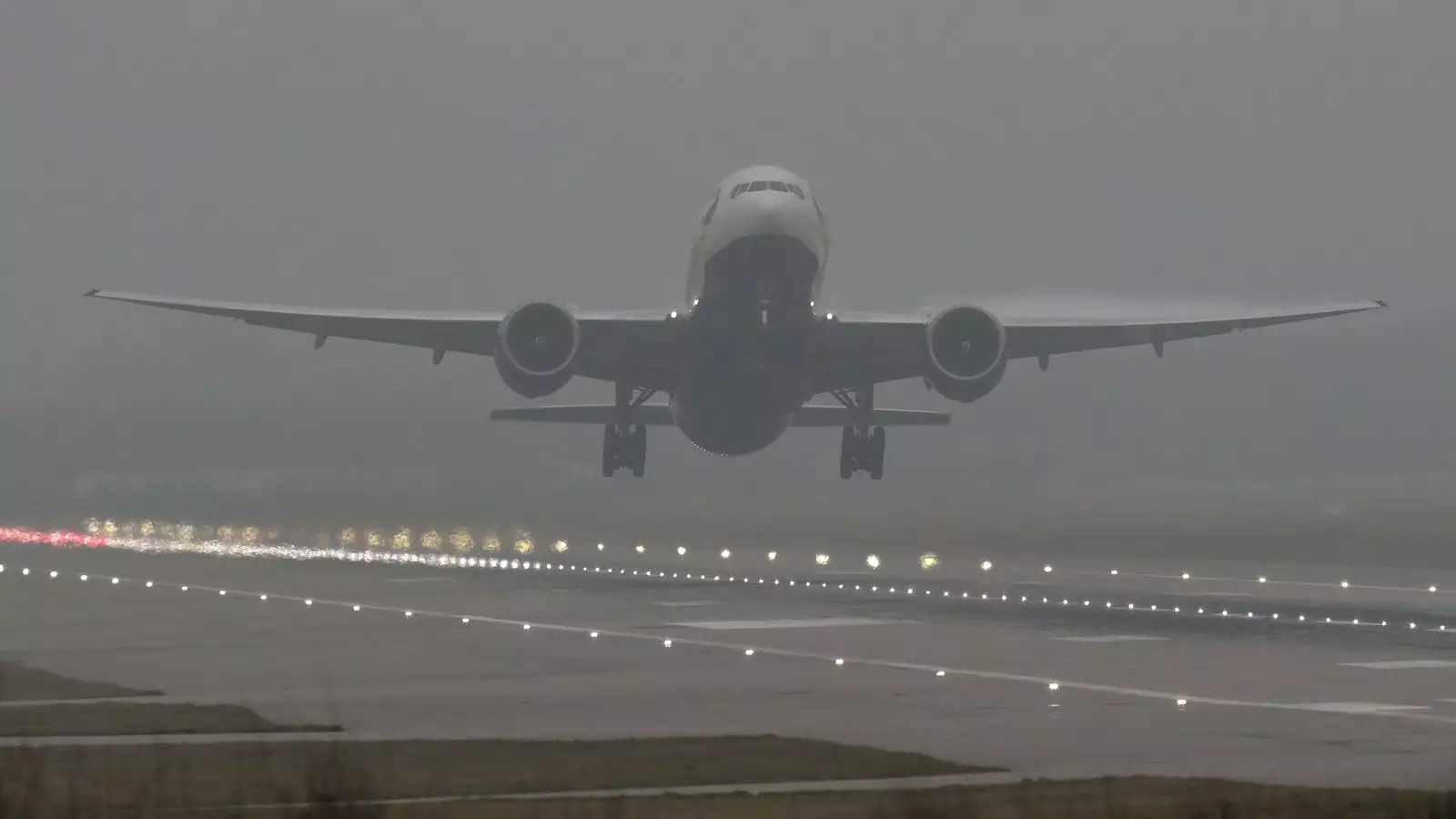In the UK, a persistent wave of heavy fog has significantly impacted travel, particularly affecting air traffic across the country. On Friday, around 20,000 travelers faced disruptions as dense fog created challenging visibility conditions. This unfortunate situation was highlighted by travel journalist Simon Calder, who reported widespread cancellations and delays across major airports, calling attention to the resilience of air traffic management in the face of these weather challenges. National Air Traffic Services (NATS) has taken necessary precautions by imposing temporary air traffic restrictions to ensure passenger safety amid this low-visibility scenario.
The situation at airports such as Gatwick and Heathrow has been nothing short of chaotic, with notable delays and cancellations. Passenger advisories from airport representatives underline the uncertainty, advising travelers to verify their flight statuses before heading to the airport. With delays reaching up to three hours and several departures and arrivals grounded, the cumbersome effects of fog were acutely felt across the travel sector.
As reported by the Met Office, the fog was particularly dense in the South East and central England. Visibility was reported to drop to as low as 100 meters in certain regions, creating hazardous conditions for drivers as well. Motorists were urged to allow for extended braking distances, recognizing that fog not only impacts air travel but also significantly affects road safety and traffic flow.
Meteorologist Liam Eslick emphasized that this time of year is critical for travel, especially as people embark on holiday journeys. The implications are significant; with heavy fog enveloping much of England, combined with ongoing holiday traffic, the potential for accidents and disruptions increases. The Met Office is actively monitoring the weather situation, yet forecasts suggest that the fog’s grip is not likely to be released anytime soon.
Looking ahead, Sunday is projected to be a particularly congested day at Gatwick, with 769 flights scheduled. This heavy schedule may exacerbate the situation should the fog persist. Concurrently, the foreboding weather extends beyond just fog; a yellow warning for heavy rain was issued for parts of Scotland, with potential rainfall reaching up to 140mm. As celebrations like Edinburgh’s Hogmanay approach, organizations are preparing for possible weather-related disruptions, advising attendees to plan accordingly.
Additionally, forecasts indicate a bleak start to the new year, with ongoing unsettled weather patterns likely to bring rain, wind, and even snow to various parts of the UK. The prospect of sustained inclement weather serves as a reminder that travel conditions can change rapidly and unexpectedly.
The management of air traffic during such exceptional weather events demonstrates the intricate balance between safety and efficiency. The UK’s primary air traffic control provider, NATS, has had to implement temporary restrictions aimed at mitigating risk during this turbulent period. While such measures are understandably inconvenient, they are critical in preventing potential accidents.
As shared by Calder, the challenges of diversions and cancellations reflected the broader crisis at the country’s major airports, prompting passengers to seek alternative routes and adapt their travel plans extensively. The story of Teesside Airport serves as one example, where diversions sent flights as far away as Dublin, underlining the extent of operational difficulties faced by the aviation industry.
In light of these disruptions, it becomes evident that both travelers and transport operators must remain adaptable and prepared for the unexpected. Passengers are encouraged to stay informed about the evolving weather conditions and their potential impact on travel plans. Furthermore, a culture of understanding and patience is essential, as a proactive approach to monitoring flight schedules and weather reports can alleviate some of the stress associated with travel during such turbulent times.
As the fog eventually lifts, travel will gradually normalize once more, but the underlying issues highlighted by this weather episode—air traffic management, passenger safety, and the overall resilience of travel infrastructure—will remain pertinent topics of discussion in the coming weeks. The current fog crisis serves as a stark reminder of how weather can drastically alter our travel landscape, underscoring the ongoing need for effective communication and readiness in the face of nature’s unpredictability.

